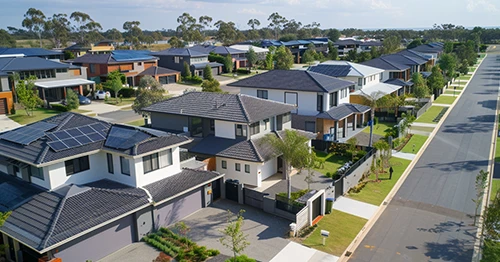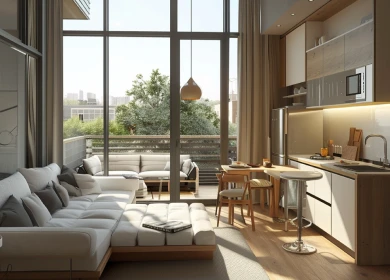Updated: 09 May, 2025
The ANZ CoreLogic Housing Affordability quarterly report reveals the challenges many would face when buying or renting in Australia. The May 2023 report analysed the rental affordability crisis in Australia caused by the pandemic’s impact on rental supply and demand.
Why Is Australia Facing A Rental Affordability Crisis?
- Before the pandemic, low-income renters required 47% of their income to pay rent on a new lease. By March 2023, that rose to 51.6%. This led to a record-high gap between the portions of their income that median and low-income households are required to pay for rent.
- The scarcity of rental properties was not able to meet growing demand. In April 2023, CoreLogic reported 91,869 rental listings, a drop of nearly 50% from the peak of 181,493 listings observed in May 2020. This decrease in rental supply also represented a staggering 38.1% decline from the average of 148,259 over the previous decade.
- Values fell in regional markets. Most of the acceleration in regional rent growth was concentrated between June 2020 and March 2021. This was due to a spike in net regional migration amid stricter lockdowns in the capital cities. The largest decline in rents across the regional markets was seen in units in the Southern Highlands and Shoalhaven region, where values fell 5.4% in the three months to April 2023.
- There was reduced investor activity over time. Even with the unprecedented rise in rents, the combined value of investor lending fell 30% from a peak in January 2022, suggesting there was a slower rate of new rental supply added to the market when demand was strong.
- Due to the rise in interest rates, repayments on new investment purchases were higher than the rent income. Even when weekly rent rose $115 a week through to April, repayments increased by $318 a week.
- New dwelling approvals have declined, and higher interest rates and the expiry of the HomeBuilder grant caused a decrease in the supply of new homes. ABS data reveals the number of approvals averaged 15,000 a month for the past six months, compared with a peak of about 23,000 in March 2021.
- The shift in housing preferences added to the rental affordability crisis. The Reserve Bank of Australia observed a decline in group households in 2020, which decreased the average number of people per household. This change led to the creation of about 120,000 new households, due to increased domestic demand. People also sought larger and more functional living spaces to accommodate remote work.
How High Is Rent In Australia?
As per the housing affordability report, here are the 10 most expensive places to rent in 2023:
| Region | Type of dwelling | Change in rental values (three months to April 2023) | Median weekly rental value |
|---|---|---|---|
| Sydney – Eastern Suburbs | Houses | 7.4% | $1,677 |
| Sydney – Northern Beaches | Houses | 2.2% | $1,341 |
| Sydney – North Sydney and Hornsby | Houses | 1% | $1,233 |
| Sydney – City and Inner South | Houses | 6.2% | $1,043 |
| Sydney Inner West | Houses | 3.9% | $982 |
| Sydney – Sutherland | Houses | 0.2% | $962 |
| Sydney – Ryde | Houses | 4.7% | $956 |
| Brisbane Inner City | Houses | 2.9% | $939 |
| Perth – Inner | Houses | 4.2% | $938 |
| Western Australia – Outback (North) | Houses | 1.9% | $911 |
Source: ANZ CoreLogic Housing Affordability Report May 2023, Summary of rental market performance, SA4 regions
Rental Affordability Worsens
The portion of income required to service rent refers to the percentage of a tenant’s income used to pay for monthly rent. The figure is now 30.8% nationwide – this is the highest value since June 2014.
| Details | Dwellings | Houses | Units |
|---|---|---|---|
| National | 30.8% | 31.4% | 29.2% |
| Combined Capitals | 29.1% | 30.1% | 26.9% |
| Combined Regions | 33.1% | 33.3% | 32.0% |
| Greater Hobart | 34.3% | 34.8% | 30.8% |
| Greater Darwin | 25.4% | 27.9% | 21.8% |
Table: Portion of income required to service rent as of March 2023
Should I Buy A Home?
As renting a home becomes more expensive due to the supply and demand imbalance, you might consider buying a home. You can use our rent or buy calculator to help you decide. Our mortgage brokers are here to help you navigate the market and get you the finance needed to buy your home. Call us on 1300 889 743 or complete our free online assessment form today.





